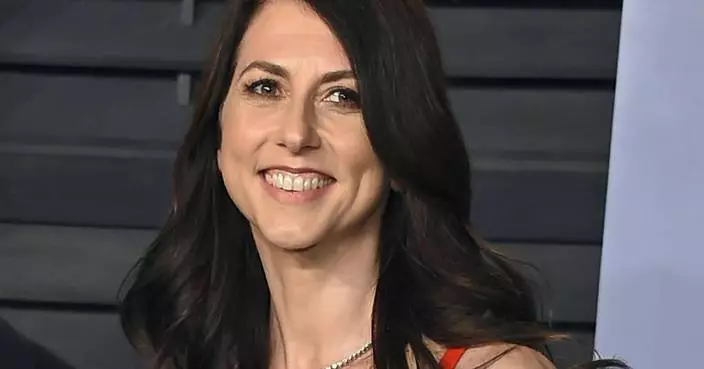Children of the wealthy and connected get special admissions consideration at some elite U.S. universities, according to new filings in a class-action lawsuit originally brought against 17 schools.
Georgetown’s then-president, for example, listed a prospective student on his “president’s list” after meeting her and her wealthy father at an Idaho conference known as “summer camp for billionaires,” according to Tuesday court filings in the price-fixing lawsuit filed in Chicago federal court in 2022.
Although it’s always been assumed that such favoritism exists, the filings offer a rare peek at the often secret deliberations of university heads and admissions officials. They show how schools admit otherwise unqualified wealthy children because their parents have connections and could possibly donate large sums down the line, raising questions about fairness.
Stuart Schmill, the dean of admissions at the Massachusetts Institute of Technology, wrote in a 2018 email that the university admitted four out of six applicants recommended by then-board chairman Robert Millard, including two who “we would really not have otherwise admitted.” The two others were not admitted because they were “not in the ball park, or the push from him was not as strong.”
In the email, Schmill said Millard was careful to play down his influence on admissions decisions, but he said the chair also sent notes on all six students and later met with Schmill to share insight “into who he thought was more of a priority.”
The filings are the latest salvo in a lawsuit that claims that 17 of the nation’s most prestigious colleges colluded to reduce the competition for prospective students and drive down the amount of financial aid they would offer, all while giving special preference to the children of wealthy donors.
“That illegal collusion resulted in the defendants providing far less aid to students than would have been provided in a free market,” said Robert Gilbert, an attorney for the plaintiffs.
Since the lawsuit was filed, 10 of the schools have reached settlements to pay out a total of $284 million, including payments of up to $2,000 to current or former students whose financial aid might have been shortchanged over a period of more than two decades. They are Brown, the University of Chicago, Columbia, Dartmouth, Duke, Emory, Northwestern, Rice, Vanderbilt and Yale.
Johns Hopkins is working on a settlement and the six schools still fighting the lawsuit are the California Institute of Technology, Cornell, Georgetown, MIT, Notre Dame and the University of Pennsylvania.
MIT called the lawsuit and the claims about admissions favoritism baseless.
“MIT has no history of wealth favoritism in its admissions; quite the opposite,” university spokesperson Kimberly Allen said. “After years of discovery in which millions of documents were produced that provide an overwhelming record of independence in our admissions process, plaintiffs could cite just a single instance in which the recommendation of a board member helped sway the decisions for two undergraduate applicants."
In a statement, Penn also said the case is meritless that the evidence shows that it doesn't favor students whose families have donated or pledged money to the Ivy League school.
“Plaintiffs’ whole case is an attempt to embarrass the University about its purported admission practices on issues totally unrelated to this case," the school said.
Notre Dame officials also called the case baseless. “We are confident that every student admitted to Notre Dame is fully qualified and ready to succeed,” a university spokesperson said in a statement.
The South Bend, Indiana, school, though, did apparently admit wealthy students with subpar academic backgrounds.
According to the new court filings, Don Bishop, who was then associate vice president for enrollment at Notre Dame, bluntly wrote about the “special interest” admits in a 2012 email, saying that year's crop had poorer academic records than the previous year's.
The 2012 group included 38 applicants who were given a “very low” academic rating, Bishop wrote. He said those students represented “massive allowances to the power of the family connections and funding history,” adding that “we allowed their high gifting or potential gifting to influence our choices more this year than last year.”
The final line of his email: “Sure hope the wealthy next year raise a few more smart kids!”
Some of the examples pointed to in this week's court filings showed that just being able to pay full tuition would give students an advantage. During a deposition, a former Vanderbilt admissions director said that in some cases, a student would get an edge on the waitlist if they didn’t need financial aid.
The 17 schools were part of a decades-old group that got permission from Congress to come up with a shared approach to awarding financial aid. Such an arrangement might otherwise violate antitrust laws, but Congress allowed it as long as the colleges all had need-blind admissions policies, meaning they wouldn't consider a student’s financial situation when deciding who gets in.
The lawsuit argues that many colleges claimed to be need-blind but routinely favored the children of alumni and donors. In doing so, the suit says, the colleges violated the Congressional exemption and tainted the entire organization.
The group dissolved in recent years when the provision allowing the collaboration expired.
The Associated Press’ education coverage receives financial support from multiple private foundations. AP is solely responsible for all content. Find AP’s standards for working with philanthropies, a list of supporters and funded coverage areas at AP.org.

FILE - Fans file out of the stadium as clouds approach the Golden Dome and Basilica of the Sacred Heart on Oct. 12, 2024, in South Bend, Ind. (AP Photo/Michael Caterina, File)

FILE - Prospective students tour Georgetown University's campus in Washington, July 10, 2013. (AP Photo/Jacquelyn Martin, File)

FILE - People walk past the Ray and Maria Stata Center on the campus of the Massachusetts Institute of Technology, in Cambridge, Mass., on July 16, 2019. (AP Photo/Steven Senne, File)

FILE - Pedestrians walk past Penn State University' Old Main building, Friday, May 15, 2015, in State College, Pa. (Nabil K. Mark/Centre Daily Times via AP)










